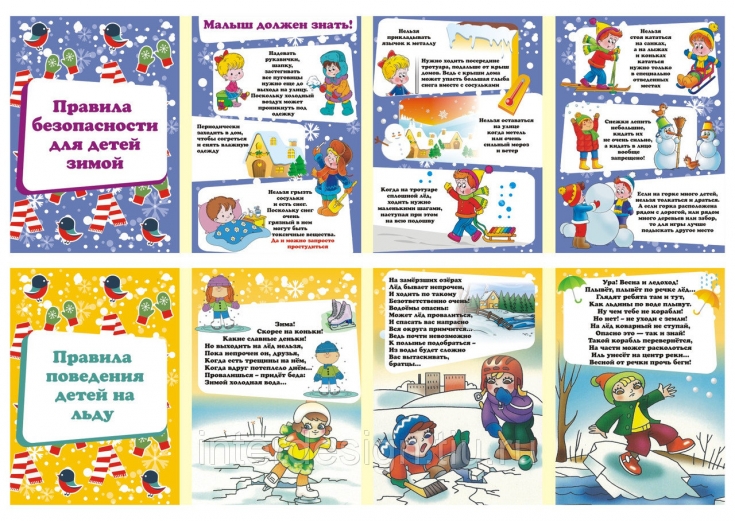The snowy beauty-winter is approaching (and in some regions it has already arrived). And this means that for all families, frost and snow will become an occasion for fun festivities. Slides, sleds, skis, skates, and just fun floundering in the snow and playing snowballs – without all this it is difficult to imagine a full-fledged winter.
Vigilant parents are aware: where is the whole day outside in the cold and in the snow – there and the risk of frostbite in a child who has played too much. Where are the slides, skis and sleds – there is a risk of injury.
How to make holidays with children in winter safe? What should I do if my child is injured or has frostbite? Read about it in the article estet-portal.com!
1. Frostbite on vacation with children in winter
2. Limb injuries on vacation with children in winter
Frostbite on vacation with children in winter
The only damage that can't be taken at any other time of the year. Frostbite in children occurs much faster than in adults, due to the more delicate skin and the body's not yet perfect thermoregulation system.
Certain weather conditions also contribute to frostbite:
- air temperature below minus 20 degrees;
- strong wind;
- humid air.
If at the same time the child is wearing tight and damp clothes (and this is quite real due to active body movements), and the child himself is tired, hungry or suffers from anemia, then frostbite is almost guaranteed.
Frostbite rarely threatens very young children, as our people are accustomed to wrapping babies like cabbages. But for schoolchildren, who spend hours in the snow, not noticing damp clothes and frost, frostbite of the limbs and face – not uncommon at all.
Frostbite can be 4 degrees of damage.
In the first hours, the symptoms of frostbite will be the same:
- skin becomes pale or bluish in color;
- skin stays cold even when warming up;
- spot sensitivity is lost;
- a little earlier there may be painful sensations (they will be replaced by insensibility when progressive frostbite gets to the nerve endings).
At the 1st degree of damage when thawing, the skin turns red, swells, itches and begins to peel off.
In grade 2, blisters form on the skin. Subsequent degrees are much worse – from the death of all layers of the skin to the defeat of all tissues down to the bones.
If you suspect a child with frostbite, the first thing to do is to try to restore blood flow to the affected area. You can rub the place with your hands, woolen cloth and alcohol. Provide the child with warm, dry clothing (wrap the affected area especially well) and hot drinks.
Do not try to quickly warm the skin near the radiator or in hot water. This will accelerate further tissue damage. For general warming, you can put the child in a hot bath, but the affected limb must remain above the water!
Never rub the frostbitten area with snow! It will only make matters worse and certainly not warm the skin.
If blisters form on the skin, do not puncture them to avoid infection. In case of damage, apply a sterile dressing soaked in alcohol diluted with water.
For more severe injuries, the child needs urgent hospitalization. Everything you can do to help the victim in this case before the arrival of the doctors –
Falls from sleds or skis (or just falling on ice) often result in
injuries such as sprains, sprains, cracks or fractures. The simplest classification of fractures – open and closed fractures. An open fracture cannot be confused with another – fragments of bone will protrude, breaking through the soft tissue.
If the integrity of the damaged bone is partially preserved, then we are talking about a bone fracture. Fissures are more common in children than fractures, as children's bones are more elastic than adults (not completely "ossified").
Dislocations and subluxations in children are rare, as the articular ligaments at a tender age are very elastic. But
sprain
sharp pain that gets worse when you try to move your arm or leg;
extensive edema;- curvature or unnatural convexity of the limb (in case of fractures and dislocations);
- a hematoma may occur in the damaged area.
- If you suspect a fracture or dislocation, remember the school life safety lessons and apply a splint from improvised materials. Watch to avoid limb displacement. Do not unbend the limb with force – fix in any comfortable, pain-free position. In many cases, you can hang your hand on a scarf.
- If there is the slightest suspicion of a spinal injury, do not try to lift and carry the child yourself!
Relieve pain and relieve swelling by short-term application of a cold compress (but not snow on bare skin, if you do not want frostbite) – for 15-20 minutes. But warming compresses and warming ointments are strictly prohibited! Also, don't try to massage the injury.
This
First Aid
ends. Only X-ray examinations can diagnose injuries, so the sooner the child gets to the hospital, the better. Of course, it is better to try to prevent any injuries and damage than to treat the consequences later. To protect your child from frostbite, dress him/her in warm and loose windproof clothes and shoes. 20 minutes before leaving (not later!) Treat your face with a special oily protective cream. To minimize the risk of injury, buy your child winter boots with non-slip soles.
In extreme cases, you can make it yourself by sticking pieces of sandpaper or a pharmacy patch before walking.
And keep the slides and skating rinks where your child walks safe. Good luck and safe
vacation with children in winter!
How to organize a trip with a child: 5 tips for parents
You may be interested in: Perfect belly in 5 minutes a day.







Add a comment